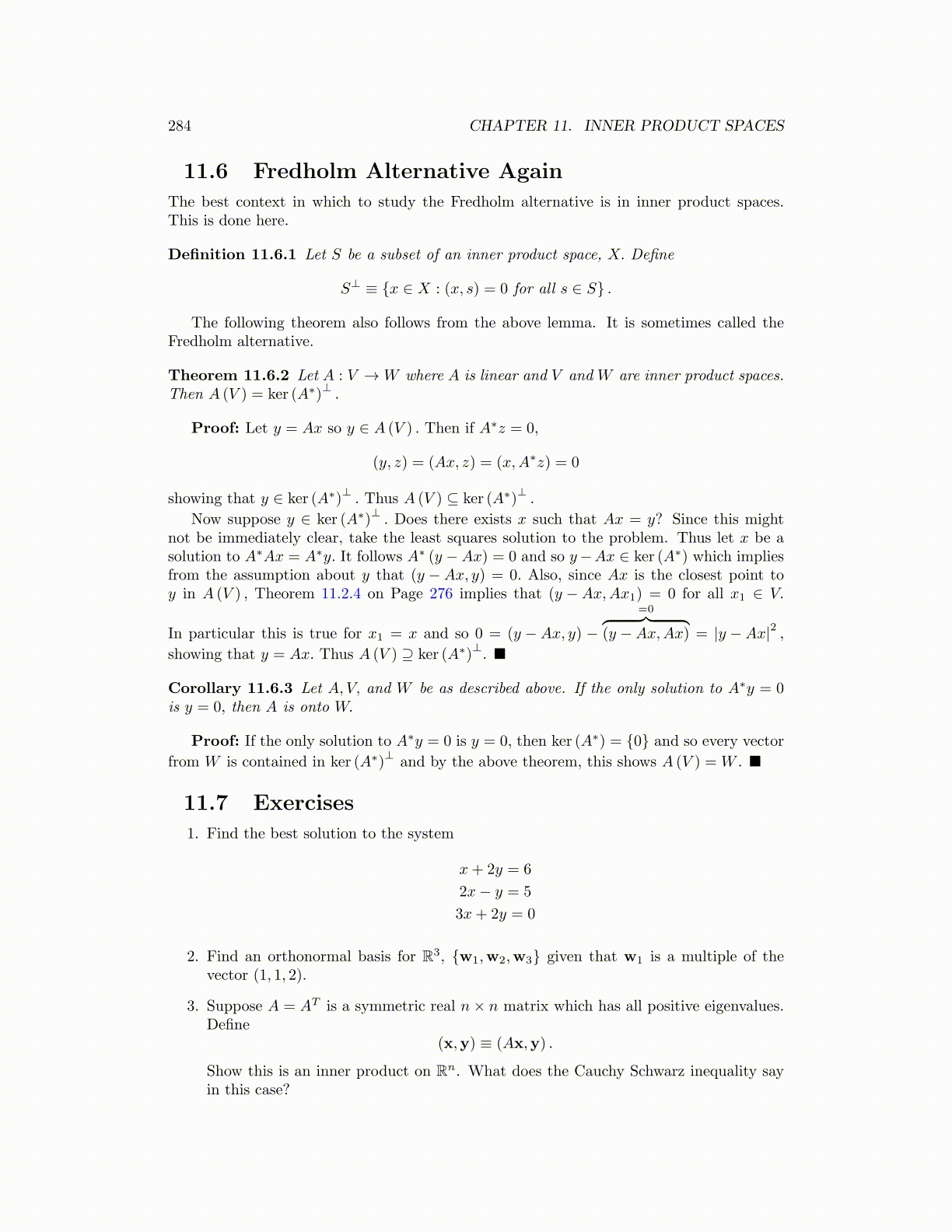
284 CHAPTER 11. INNER PRODUCT SPACES
11.6 Fredholm Alternative Again
The best context in which to study the Fredholm alternative is in inner product spaces.This is done here.
Definition 11.6.1 Let S be a subset of an inner product space, X. Define
S⊥ ≡ {x ∈ X : (x, s) = 0 for all s ∈ S} .
The following theorem also follows from the above lemma. It is sometimes called theFredholm alternative.
Theorem 11.6.2 Let A : V →W where A is linear and V and W are inner product spaces.Then A (V ) = ker (A∗)
⊥.
Proof: Let y = Ax so y ∈ A (V ) . Then if A∗z = 0,
(y, z) = (Ax, z) = (x,A∗z) = 0
showing that y ∈ ker (A∗)⊥. Thus A (V ) ⊆ ker (A∗)
⊥.
Now suppose y ∈ ker (A∗)⊥. Does there exists x such that Ax = y? Since this might
not be immediately clear, take the least squares solution to the problem. Thus let x be asolution to A∗Ax = A∗y. It follows A∗ (y −Ax) = 0 and so y−Ax ∈ ker (A∗) which impliesfrom the assumption about y that (y −Ax, y) = 0. Also, since Ax is the closest point toy in A (V ) , Theorem 11.2.4 on Page 276 implies that (y −Ax,Ax1) = 0 for all x1 ∈ V.
In particular this is true for x1 = x and so 0 = (y −Ax, y) −=0︷ ︸︸ ︷
(y −Ax,Ax) = |y −Ax|2 ,showing that y = Ax. Thus A (V ) ⊇ ker (A∗)
⊥. ■
Corollary 11.6.3 Let A, V, and W be as described above. If the only solution to A∗y = 0is y = 0, then A is onto W.
Proof: If the only solution to A∗y = 0 is y = 0, then ker (A∗) = {0} and so every vector
from W is contained in ker (A∗)⊥
and by the above theorem, this shows A (V ) =W . ■
11.7 Exercises
1. Find the best solution to the system
x+ 2y = 6
2x− y = 5
3x+ 2y = 0
2. Find an orthonormal basis for R3, {w1,w2,w3} given that w1 is a multiple of thevector (1, 1, 2).
3. Suppose A = AT is a symmetric real n× n matrix which has all positive eigenvalues.Define
(x,y) ≡ (Ax,y) .
Show this is an inner product on Rn. What does the Cauchy Schwarz inequality sayin this case?